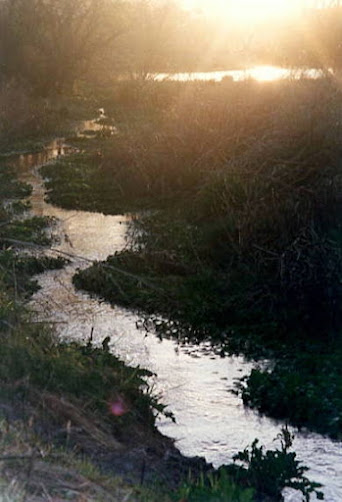Snake Season
 |
It’s been 6 years since we bought our home at the outskirts of Arivaca, and on April 20th we saw a rattlesnake on the property for the first time. I’d bet that some have passed through previously without our being around to notice, but this Western Diamondback appeared content to hang around a while. It was coiled up peacefully in the shady bed beneath the Pine Tree, well-disguised in the wood chip mulch.
 |
| Pretty good camouflage, don't you think? |
I think Western Diamondbacks are quite beautiful (admired from a distance), with their tiny Zorro mask, crisscross body pattern, and banded tail rattles. When local rattlesnake “re-homing” expert R.D. Ayers arrived, his opinion was that our visitor was a 2-3 year old female approx. 30 inches long, that was very well fed and had recently shed her skin, so was especially attractive.
This time of year is when rattlesnakes typically come out of hibernation and resume their daily routines: hunting, mating, digesting and resting. So it’s wise to take a little extra time to practice good observation skills whenever hiking on trails, walking in any tall grass areas on your land… or gardening. I noticed our visitor from a path about 6 ft away while watering some newly-planted perennials, and am very glad I didn’t disturb it with a cold shower.
There are many myths about rattlesnakes, one of which is that they will always rattle a warning before they strike. A thousand Hollywood movies have perpetuated this falsehood, and I‘m sure that thousands of people over the years have been bitten while standing around waiting to hear that warning… In addition, when rattlesnakes hear and feel the footsteps of a large mammal approaching (such as a human), they will typically attempt to withdraw unless they feel cornered, so wearing boots and using a walking stick to create a little extra sound and vibration when you hike will do them and you a favor.
During the more moderate temps in spring and fall, rattlesnakes are most active during daytime hours, but when summer temperatures arrive they are most active at night, so keep your “eagle eyes” open no matter what time it is. Most rattlesnake bites contain a combination of two types of toxins: hemotoxins that damage tissue and affect the circulatory system, and neurotoxins that immobilize the nervous system. Typically, adult venom is composed primarily of hemotoxins, but the venom of baby rattlesnakes is primarily neurotoxins, which makes a bite from them much more dangerous. Late summer is when young are born complete with fangs and venom, so keep your observation skills even sharper during fall.
Western Diamondbacks eat a wide variety of prey, such as rabbits, gophers, mice, and rats, which I appreciate since I prefer not having those critters feasting on my plants… and I sincerely hope our visitor is still finding good hunting in her new home, far from my garden thanks to R.D. However, since she chose to rest so close to my birdseed feeders, it may have been birds or other seed-eating critters that brought her here, so I’ve now taken those feeders down for the summer. But still keeping my “eagle eyes” open each day, in case any more visitors come to call.
Research Sources:
R.D. Ayers


